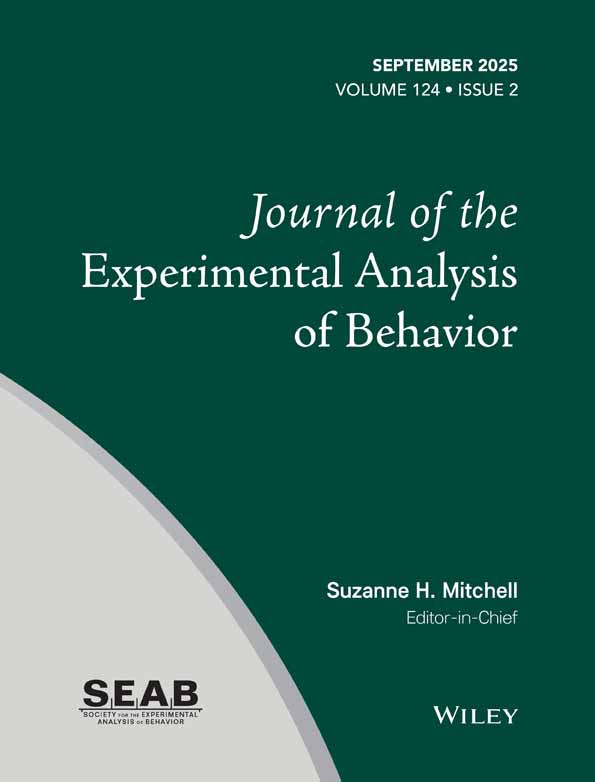SHARED ATTENTION IN PIGEONS1
This research was supported by USPHS grant MH12485 and FR-7006 Biomedical Support grant to D. A. Riley. The first author was supported by USPHS Predoctoral Traineeship MH10878. The authors thank R. C. Hippie and D. A. Riley for constructive advice and critical reading of the manuscript, and E. R. Hafter for computer programming assistance during the early stages of this research.
Abstract
Two pigeons performed a three-key matching-to-sample task. The comparison (side key) stimuli were either solid colors or white lines. The sample (center key) stimuli were either compounds (white lines on colored grounds) or elements (white lines on black grounds on some trials, and solid colors on other trials). Sample stimuli were presented for nine sample stimulus durations ranging between 0.04 and 5.00 sec. Within each daily session, both compound and element samples were presented at each sample duration in a random sequence. Compound samples controlled matching responses less effectively than did element samples at all sample stimulus durations.




